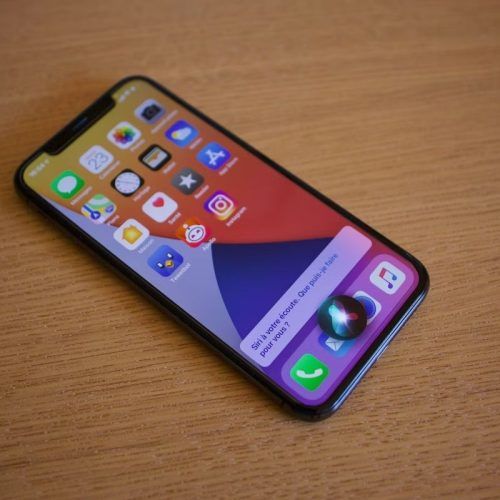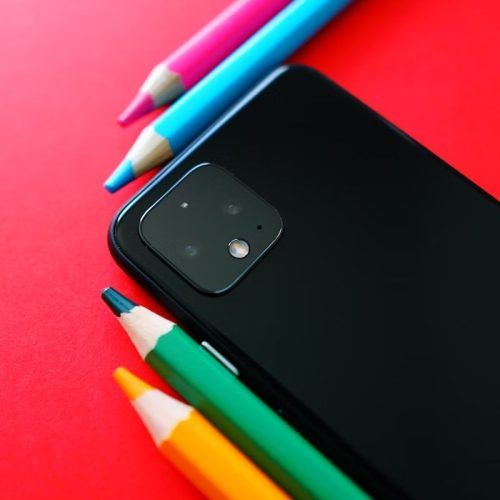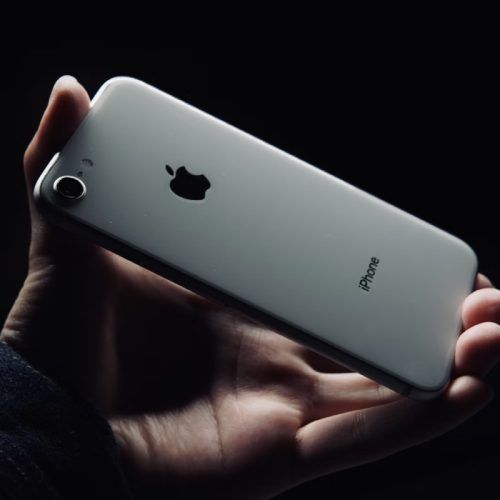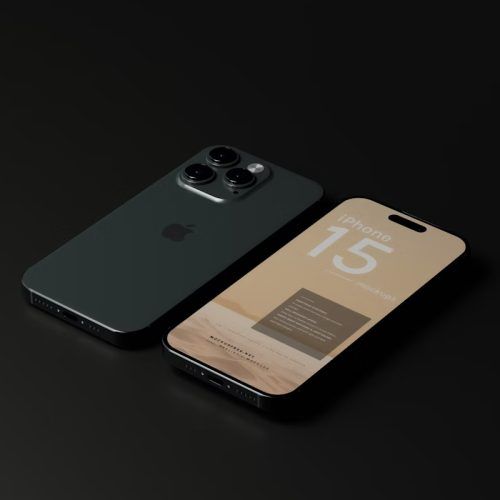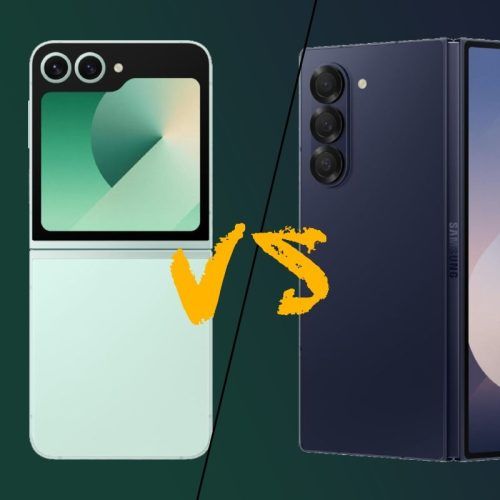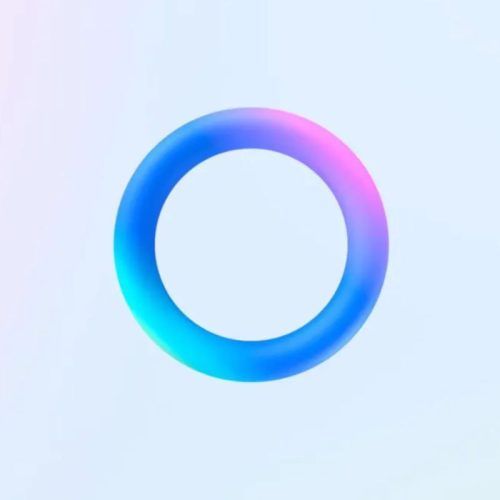Has the latest iPhone 15 got your attention? With that sneakily clever Dynamic Island, an updated camera system and a refreshed overall package, it is easy to fall in love with the iPhone 15. It’s even easier to do so with the iPhone 15 Pro Max, which also offers a better zoom camera, a nicer Titanium frame and next-gen performance from a 3nm chip. Carrying almost similar prices as its predecessor, these iPhones are still among the priciest smartphones money can buy and hence, not all of you may want to upgrade to the iPhone 15. Instead, you might be more interested in all of the iPhone 16 rumours that are already teasing the iPhone’s future.
You don’t have to be a tech genius or industry insider to know that the iPhone 16 series will be superior to the iPhone 15. What’s interesting, however, are all of the iPhone 16 rumours that are painting an ambitious picture of Apple’s 2024 iPhone. Mind you, it’s a picture that can give its fiercest rivals (Samsung, hope you’re listening) sleepless nights for the next few years.
Could the iPhone 16 be the ultimate evolution of the iPhone in all its years of existence? While we can’t comment on that until Tim Cook and his team present the iPhone 16 on the stage, we can certainly look at all the iPhone 16 rumours that have certainly captured our attention.
All the iPhone 16 rumours that have caught our attention
1. The lack of physical buttons
Apple’s history is ridden with instances where it has successfully managed to remove many technologies and/or features that people considered crucial. On the iPhone, we have witnessed the disappearance of the 3.5mm headphone jack, the SIM card tray and the charger from the box (the last one is more of a business decision, and a bad one at that!)
Come 2024, Apple is getting ready to remove something else – physical buttons of any kind! If rumours are to be believed, Apple wants to get rid of all the physical buttons on the iPhone.

This may seem like an unusual decision considering Apple just added an extra button on the iPhone 15 Pro for shortcuts and functions. However, the Action button is more of a replacement for the ageing slider switch and is resistant to water and dust damage. Additionally, initial rumours of the iPhone 15 Pro had also suggested that Apple was getting rid of the buttons this year. It was only due to manufacturing challenges that the move was delayed.


Apple ‘Wonderlust’ Event 2023 Highlights: New ‘USB-C-Licious’ iPhone 15, Watch Series 9 Unveiled
So how do you lock your iPhone or change the volume levels if there are no buttons? The answer lies in a technology used on Apple’s cheapest iPhone on sale today. The current-gen iPhone SE continues to have a Home button though, in essence, it’s just a capacitive key that uses the iPhone’s superior haptics to emulate a button press. In the world of technology, this is also known as a Solid State Button.
For the iPhone 16 Pro, Apple will employ the same technology for its power and volume keys. Rumours also hint at an additional haptic motor being used to emulate a button press, thereby making it feel more natural. The advantages of a solid-state button include a water-tight compartment and more internal space for fitting a bigger capacity battery.
On the downside, how are we going to switch on our iPhones? After all, these solid-state keys work only when the device is switched on. So are we looking at an always-on iPhone in the future?
2. Invisible Face ID
The FaceID system has held a prominent space on the iPhone’s forehead since 2017 and, as of 2023, it has been wrapped up inside a pill-shaped cutout that we now know more fondly as the Dynamic Island.
Based on a very early leak from 2022 by the remarkably accurate Ming-Chi Kuo, the iPhone 16 Pro could finally end up offering a true fullscreen display. Apple will achieve this by putting the TrueDepth camera system under the display. Under the display… does this sound familiar? Oh yes, the Samsung Galaxy Z Fold 5 has used an under-display camera for years.

Kuo predicted that it would be more of a business decision than a technological challenge to hide the FaceID sensors and the front camera underneath the display. Having the FaceID sensors is not a challenge considering our smartphones already have certain sensors hidden under the display. However, it remains to be seen how Apple gets around the inferior image quality that under-display cameras usually suffer from. For instance, the in-display 4-megapixel front camera on the Samsung Galaxy Z Fold 5 is a fine example of this issue as it is notorious for producing blurry photos.
Nevertheless, we expect Apple to refine the technology and help us see an iPhone devoid of any obstructions on the display.
Note: If this is implemented, it could mean the end of Dynamic Island sooner than expected.
3. 120Hz displays for the vanilla iPhone 16
If you were to ask us why we wouldn’t pick up the iPhone 15 despite its lower price, it would largely be because of its display. In a world where all of the iPhone 15’s rivals feature fast 120Hz refresh rate displays as standard, Apple chose to stick to a slow 60Hz refresh rate display. We agree it isn’t an issue for those coming from older vanilla iPhones of the past but for someone seeking great value from their newest iPhone, a 60Hz display is unacceptable.
However, Apple may finally do something about it in 2024, if the rumours are to be believed. The iPhone 16 and iPhone 16 Plus could end up offering a 120Hz refresh rate display as a standard feature, something that the Pro iPhones have been offering since 2021.
However, do take this rumour with a pinch of salt as DSCC’s Ross Young had revealed in his predictions that Apple will move on to a 120Hz refresh display for the regular iPhones only in 2025. This is relevant information since Young’s predictions have been spot-on in the past.
4. A faster chipset
Since 2022, Apple has reserved its latest chip for the Pro models. For instance, the iPhone 14 reused the iPhone 13’s A15 Bionic chip whereas the iPhone 14 Pro got the new A16 Bionic chip. The iPhone 15 has received the A16 Bionic chip whereas the iPhone 15 Pro is getting the next-gen 3nm A17 Pro chip. You can see the pattern here.

The iPhone 16 and iPhone 16 Plus were, once again, expected to use the A17 Pro chip while the iPhone 16 Pro series was expected to debut the new A18 chip. However, it’s now being rumoured that Apple is planning to skip the A17 chip entirely and instead introduce the A18 chip to the entire iPhone 16 range. The A18 chip is expected to be manufactured on the new N3E process from TSMC, guaranteeing better performance while having a slight impact on power efficiency. Additionally, the N3E chips will be easier and cheaper to manufacture.
Coming back to the A18 chip, we are not getting our hopes too high about the performance being uniform across the iPhone 16 models. For all we know, Apple could simply tweak the A17 Pro chip and rename it as the standard A18 Bionic chip. It could also reserve the high-performance credentials of the new node for the A18 Pro chip and offer it as a premium feature on the iPhone 16 Pro.
Other than the chipset, it is also rumoured that the iPhone 16 and iPhone 16 Plus will get a bump in RAM capacity to 8GB. For context, on the iPhone 15 and iPhone 15 Plus, the RAM is limited to 6GB. More RAM should also help with better multitasking on the next-gen iPhones.
5. New yet familiar design for iPhone 16
The iPhone’s basic design has remained largely unchanged since 2021’s iPhone 13 but Apple designers are finally getting a free hand in shaking things up for the vanilla iPhone 16. Sadly, it seems that their imagination isn’t as wild as some of the rivals like OnePlus, iQOO and Xiaomi.

According to a report from MacRumors, the iPhone 16 will see a new camera bump design that will be reminiscent of the old iPhone 12. Unlike the diagonally placed lenses on the iPhone 15, the iPhone 16 will arrange the two camera lenses vertically. The second proposed concept from Apple’s design team shows a unified camera hump inspired by 2017’s iPhone X.
Apple is also experimenting with the idea of enforcing the Action Button as a standard feature on all the iPhone 16 variants. The Action Button debuted on the iPhone 15 Pro in 2023 as a customisable key for shortcuts to native functions and third-party apps.
6. A new Capture button
The iPhone 16 may also feature a new Capture button as a shortcut key to open the camera. The button is likely to be based on capacitive technology and Apple will rely on haptic feedback to emulate a physical button press, just like the Home button on the iPhone SE. We have seen dedicated camera shutter buttons on several Android smartphones of the past and it is interesting to see Apple falling back on a discarded concept to differentiate the next-gen iPhone from its rivals.
Google Pixel 8 Vs iPhone 15: Which Upcoming Flagship Is Better?

The iPhone Clone Wars: Android Copycats That Are Worth Looking At
Frequently Asked Questions (FAQs)
– When is the iPhone 16 expected to launch?
The iPhone 16 is expected to launch in September 2024.
– What are the rumoured features of the iPhone 16?
It is being speculated that the iPhone 16 series is likely to get the A18 chip for all of its models. Additionally, it may feature solid state buttons, under-display FaceID and high refresh rate displays as standard.
{Hero and Featured Image Credits: Courtesy Victor Serban via Unsplash (Representational Image)}




